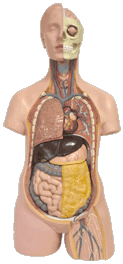At WiseGEEK, we're committed to delivering accurate, trustworthy information. Our expert-authored content is rigorously fact-checked and sourced from credible authorities. Discover how we uphold the highest standards in providing you with reliable knowledge.
What Is a Posterior Meniscal Tear?
A posterior meniscal tear is an injury to the meniscus cartilage, usually in the knee on humans. This cartilage tear can occur during physical activity, or when the joint experiences a sudden impact or trauma. Twisting motions are often responsible for a posterior meniscal tear, and the injury can be quite painful. The tiny fibers that make up the cartilage begin to tear, leading to pain, swelling, and a loss of mobility in the joint.
A posterior tear of a meniscus occurs at the back part of this cartilage. When the back end of the crescent-shaped cartilage tears, the injury is known as a posterior meniscal tear; doctors often diagnose such an injury by performing an MRI, or magnetic resonance imaging, test. This allows the doctor to see if any tears have occurred in the cartilage of the knee. A patient will usually feel pain when squatting or bending the knee, and a popping noise may be heard when the knee flexes. A popping noise in itself is not necessarily a sign of a tear, but if it is accompanied by pain or swelling, a posterior meniscal tear may have occurred.

Treatment for the injury can vary. In some cases, the meniscus can heal on its own if given plenty of rest; the RICE treatment should be used for minor tears. RICE stands for rest, ice, compression, and elevation. If the condition persists or worsens, however, further medical attention will be necessary. Severe posterior meniscal tear injuries may require surgery in order to address the problem. This is generally an invasive surgery, though arthroscopic surgery reduces the amount of incisions, thereby lowering the risk of infection and shortening recovery time.
Full recovery from this injury can take four to six months, however, during which time the patient will need to stay off the affected leg as much as possible, or as recommended by a doctor. Once the healing process progresses for a set amount of time, the patient will need to undergo physical rehabilitation to help rebuild strength and flexibility in the affected joint. The physical therapy will generally start with easy mobility exercises, and as time goes on, exercises can be performed that focus on restoring strength to the joint. This therapy should be done under the guidance and supervision of an experienced physical therapist to help prevent injuries to the affected joint.
AS FEATURED ON:
AS FEATURED ON:










Discuss this Article
Post your comments